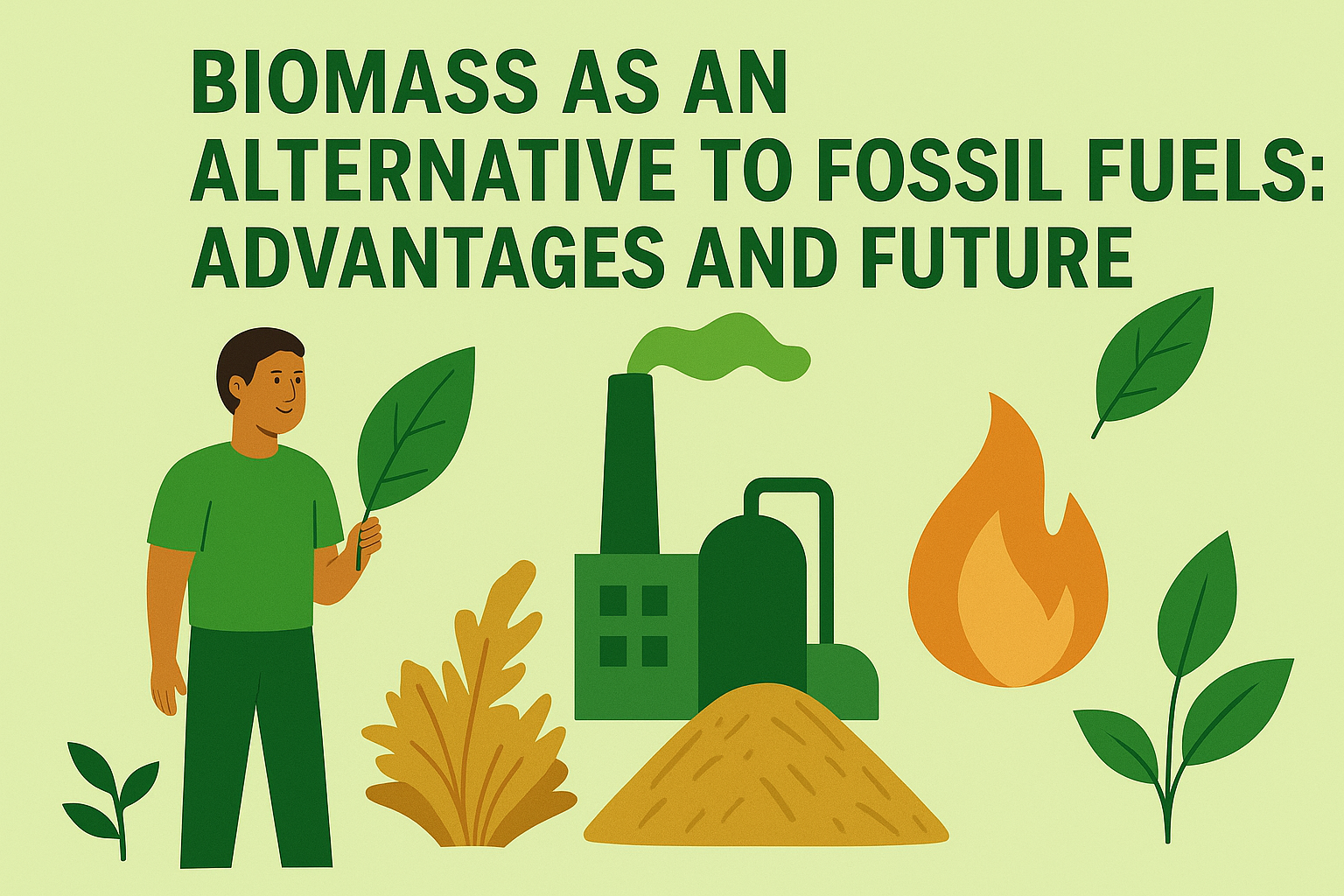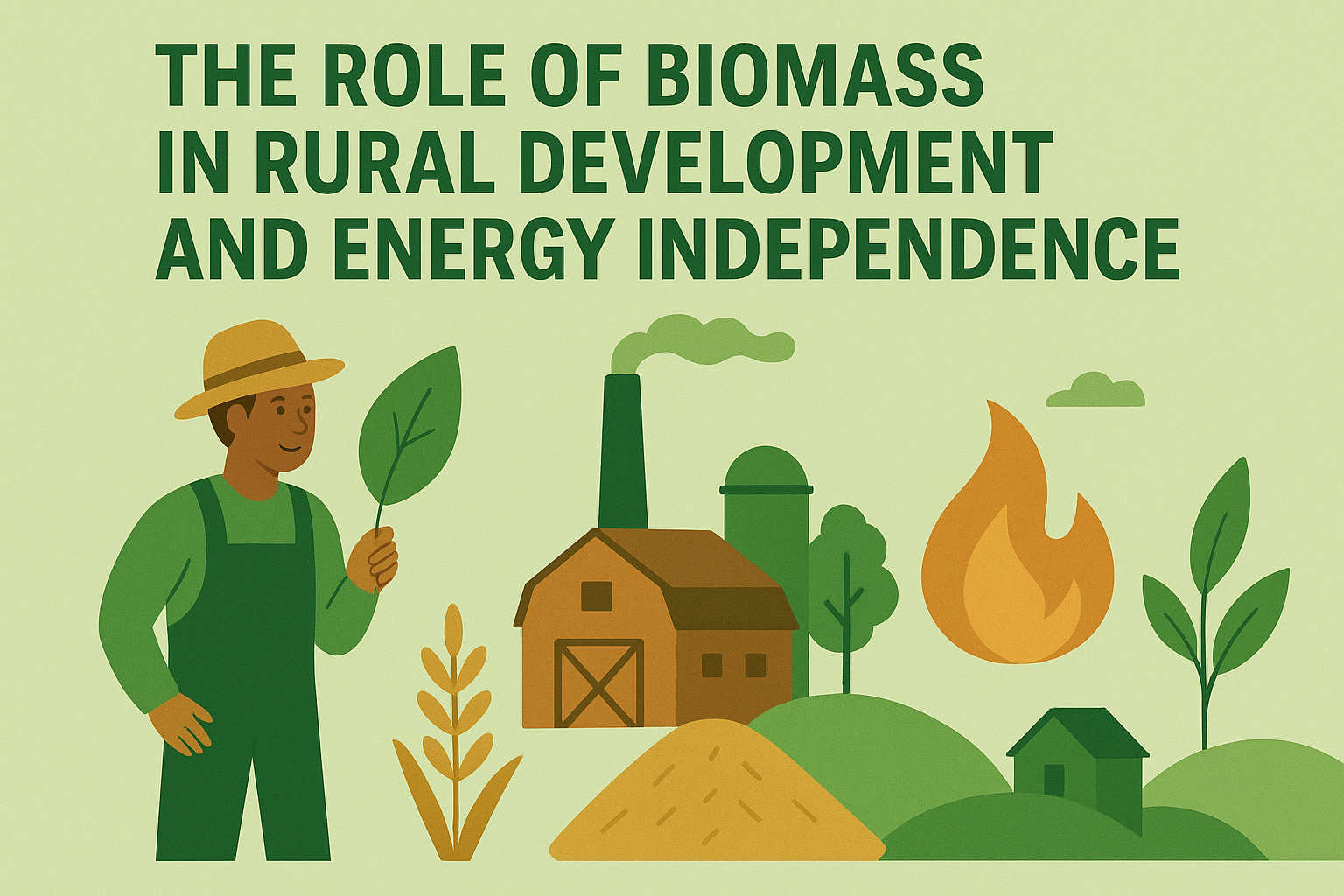Biomass fuels provide a sustainable alternative to fossil fuels. Learn about their advantages, the future of clean energy, and the role of Briquetting Machines.
Over centuries, Fossil fuels such as natural gas, coal, and oil have powered industries, homes, as well as transportation. However, the heavy environmental degradation, fluctuating prices, and rising scarcity have made the search for renewable alternatives a top priority around the world. Among the promising solutions, biomass fuels have gained traction as a sustainable, cost-effective substitute for fossil fuels.
Biomass refers to the organic matter, including the agricultural residues, organic waste, and forestry by-products that are compression into energy. Advancements in technology, including Briquetting Machines, have helped biomass stand out as a high-energy fuel form that rivals the traditional fossil fuels in energy in terms of efficiency and usability.
This article will explore the advantages of biomass as an alternative to fossil fuels, the future potential of biomass in shaping a greener energy economy, as well as the role of modern technology in its development.
Fossil fuels: the energy dilemma
Fossil fuels have been the backbone of global energy supplies for centuries, offering the high energy density that global trade systems require as well as reliable infrastructure. However, there are also drawbacks. Environmental degradation is one of the major issues, as burning fossil fuels leads to carbon dioxide emissions, contributing to climate change.
Coal Mining, natural gas extraction, as well as oil drilling are responsible for damaging the ecosystems and also contaminating the water resources. Fossil fuels are non-renewable energy sources, and the reserves are depleting faster. With the rising global demand, global oil price fluctuations have also been creating economic instability, especially in the energy-importing nations.
A clearer idea of the biomass fuels
Biomass fuels refer to organic matter that can be burned directly or converted into other energy forms, such as heat, electricity, or biofuels. There are plenty of types, including the agricultural residues, municipal organic waste, forestry by-products, and animal waste.
The forms of biomass fuels include solid fuels, liquid fuels, and gaseous fuels. Solid fuels include firewood, briquettes, and pellets. Liquid fuels are available as biodiesel and ethanol. Gaseous fuels available as biogas and syngas. Harnessing locally available biomass ensures communities can now reduce dependence on imported fossil fuels, while also depending more on self-sufficient energy systems.
Advantages of biomass fuels over fossil fuels
- Renewable and sustainable energy source – unlike fossil fuels, which take millions of years to form, biomass gets continuously replenished. So, agriculture, organic waste streams, as well as forestry waste, with proper management, ensure that they will provide an endless energy source.
- Carbon neutrality – the carbon dioxide that is released during the biomass conversion is balanced by the carbon dioxide that is absorbed during the plant growth, making biomass a carbon-neutral energy source, ensuring reduced greenhouse gas emissions.
- Energy security and independence – nations that rely heavily on imported fossil fuels can now gain greater independence by producing biomass energy locally. It will also strengthen energy security and shield economies from global oil and gas price fluctuations.
- Waste management – using the agricultural residues and organic waste ensures preventing them from being dumped or openly burned. It also ensures the reduction of pollution and the transformation of the waste into a valuable energy resource.
- Rural development and employment – The production, processing, and distribution of biomass fuels ensure the creation of jobs in rural areas. Farmers can also gain income by selling the crop residues, while entrepreneurs will be finding the opportunity for operating the biomass processing units.
- Versatile applications – biomass fuels will find versatile use in heating, cooking, electricity generation, as well as liquid fuels for vehicles. Also, they ensure that they are suitable for their diverse energy needs.
Role of Briquetting Machines in Biomass Energy
One of the key innovations in biomass utilisation has been the rise of the Briquetting Machines. The machines compress the loose biomass materials, such as husks, crop stalks, and sawdust, into dense blocks that are referred to as briquettes.
Briquettes are important in terms of the high energy density, clean burning procedure, convenient handling, industrial use, as well as waste reduction by making biomass fuel more efficient and commercially viable. The briquetting machines are also accelerating the transition away from fossil fuels.
Current applications of biomass fuels
- Electricity generation – biomass power plants use agricultural residues and wood waste for the production of electricity, and also reduce coal dependency.
- Industrial energy – cement factories, food processing plants, and brick kilns are now increasingly adopting biomass as a substitute for coal.
- Cooking and heating – briquettes and pellets serve as clean and efficient fuels for households, as well as small industries.
- Transportation fuels – bioethanol and biodiesel that are derived from biomass have been gaining traction as alternatives to other fuels.
Challenges in adopting biomass fuels
There are plenty of supply chain issues. The seasonal fluctuations in the agricultural residues can create supply gaps. Many communities and industries are also unaware of the benefits of biomass fuel. Again, the machines like briquetting machines and gasifiers always require the upfront investment that may be very high for the small farmers. In case it is not managed carefully, the large-scale biomass production will compete with food crops for land.
Future of biomass fuels
There will be improved briquetting machines in the form of technological advancements. In addition to the briquettes, there will be other technologies that will make the biomass fuels more efficient and widely available. Also, the automation and the digital monitoring will ensure enhanced large-scale operation and production. Biomass will complement the solar and wind in the hybrid system, serving in the form of reliable backup energy during periods the low sunlight or wind.
The second-generation biofuels made from non-food feedstocks will reduce the pressure on agricultural land while also meeting the transportation fuel demands. Biomass is going to play a central role in the circular economy, with the conversion of the organic waste into energy, fertilisers, and other by-products. Governments are also increasing the subsidies, tax incentives for biomass projects to accelerate the global adoption.
Conclusion
Biomass fuels have been standing out as a sustainable and eco-friendly alternative. Also, it provides a renewable energy source while addressing waste management, energy independence, as well as rural development. The advantages of biomass find amplification with technological innovations in the form of Briquetting Machines help in enhancing the fuel quality and usability. There has been a continuous improvement in the technology, global commitment to sustainability, in addition to the supportive policies that have been increasing the potential biomass for becoming a cornerstone of the clean energy revolution. Replacement of fossil fuels with biomass is going to be more than just a matter of energy. It is serving as the pathway towards a greener planet, which is empowering the rural communities as well.



